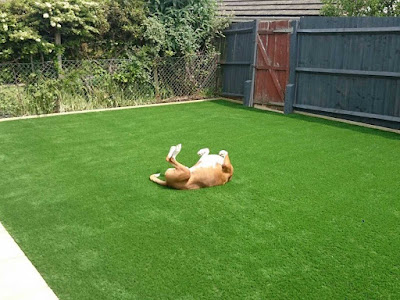Artificial Turf - The Grass Alternative
Artificial turf has become quite common place in many sports grounds, such as football pitches and hockey fields, as it is hard wearing and very easy to maintain. It is an excellent alternative to real grass, which requires a high level of maintenance, and often requires replacement after the end of the sporting season as it is subjected to a high level of wear and tear.
There are three main types of artificial turf, which are named according to the way they are laid. Sand filled, sand dressed and unfilled or water based are the most common types, and you will find they are the main types of artificial grass used for sports pitches. Unfilled artificial turf is probably the most commonly used, and as the name suggests, the pile of the turf is not filled with anything. This type of artificial grass is also referred to as water based, as it needs to be saturated with water prior to use. It is not uncommon to see an unfilled pitch being watered at half time during matches, especially in hot climates. The reason this style is favoured over the sand filled pitches is that the water base offers protection against abrasions, which are common on sand filled pitches.
Sand dressed artificial turf requires the pile to be filled to approximately 6-8mm from the tips of the blades of turf with sand. Because the sand is not actually visible, it is easy to mistake a sand dressed pitch for a water based pitch. However, any player that finds themselves sliding across the pitch will be able to tell the difference as the sand can be fairly abrasive.
Finally there is sand filled artificial turf, which is almost completely covered in sand. This style of artificial grass makes for a very hard pitch, which may also contribute to a slower ball speed compared to the ball speed on an unfilled or sand dressed pitch. Sliding across a sand filled pitch will definitely result in abrasions, and for this reason, games that quite often result in players coming into contact with the pitch, such as rugby, will predominantly be player on water based pitches my free .
The size of the ground, the availability of water and the types of games that are going to be played, will all determine the type of artificial turf that is chosen for a pitch. There is very little difference when it comes to unfilled or sand dressed pitches, so if water is not readily available to use on an unfilled pitch, then sand dressed will be the turf of choice. Sand filled pitches will be used mainly for games such as hockey or similar sports where there is minimal player contact with the artificial turf pitch.
There are three main types of artificial turf, which are named according to the way they are laid. Sand filled, sand dressed and unfilled or water based are the most common types, and you will find they are the main types of artificial grass used for sports pitches. Unfilled artificial turf is probably the most commonly used, and as the name suggests, the pile of the turf is not filled with anything. This type of artificial grass is also referred to as water based, as it needs to be saturated with water prior to use. It is not uncommon to see an unfilled pitch being watered at half time during matches, especially in hot climates. The reason this style is favoured over the sand filled pitches is that the water base offers protection against abrasions, which are common on sand filled pitches.
Sand dressed artificial turf requires the pile to be filled to approximately 6-8mm from the tips of the blades of turf with sand. Because the sand is not actually visible, it is easy to mistake a sand dressed pitch for a water based pitch. However, any player that finds themselves sliding across the pitch will be able to tell the difference as the sand can be fairly abrasive.
Finally there is sand filled artificial turf, which is almost completely covered in sand. This style of artificial grass makes for a very hard pitch, which may also contribute to a slower ball speed compared to the ball speed on an unfilled or sand dressed pitch. Sliding across a sand filled pitch will definitely result in abrasions, and for this reason, games that quite often result in players coming into contact with the pitch, such as rugby, will predominantly be player on water based pitches my free .
The size of the ground, the availability of water and the types of games that are going to be played, will all determine the type of artificial turf that is chosen for a pitch. There is very little difference when it comes to unfilled or sand dressed pitches, so if water is not readily available to use on an unfilled pitch, then sand dressed will be the turf of choice. Sand filled pitches will be used mainly for games such as hockey or similar sports where there is minimal player contact with the artificial turf pitch.




Comments
Post a Comment